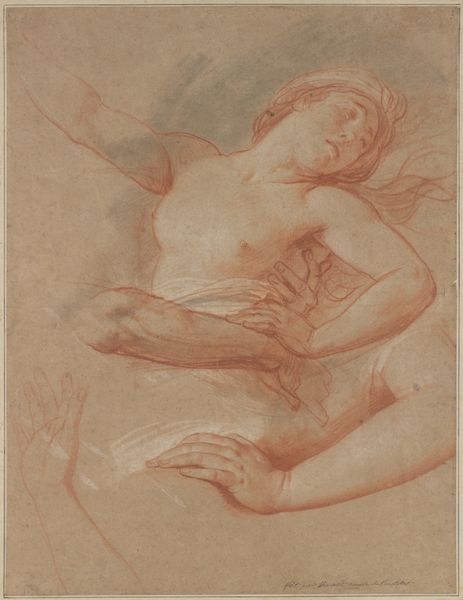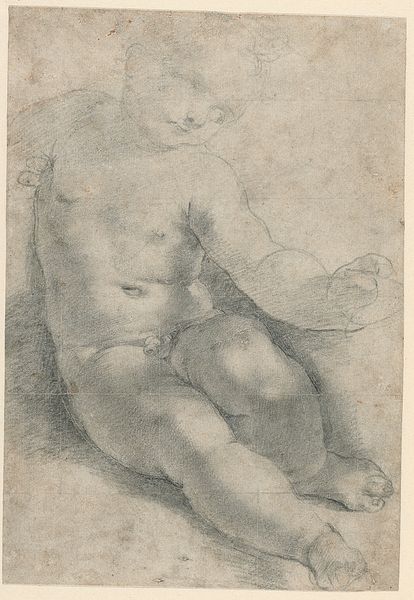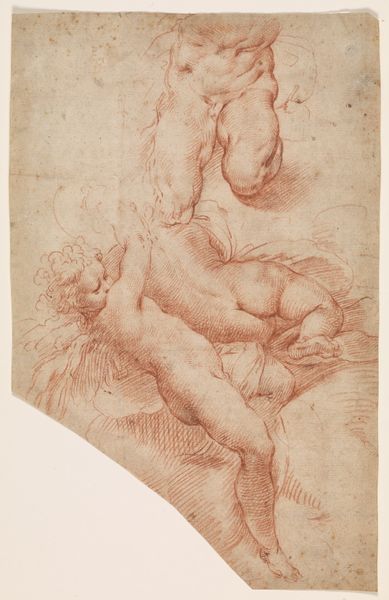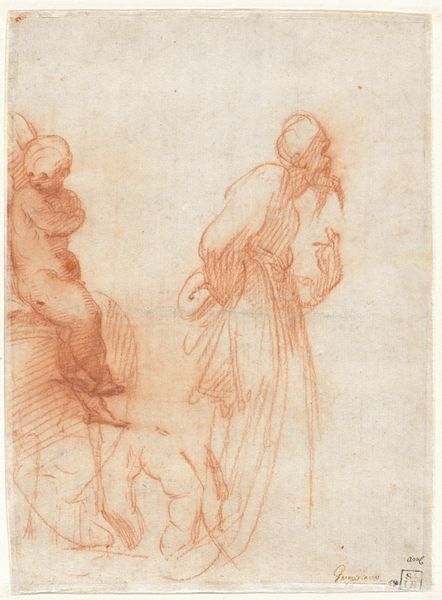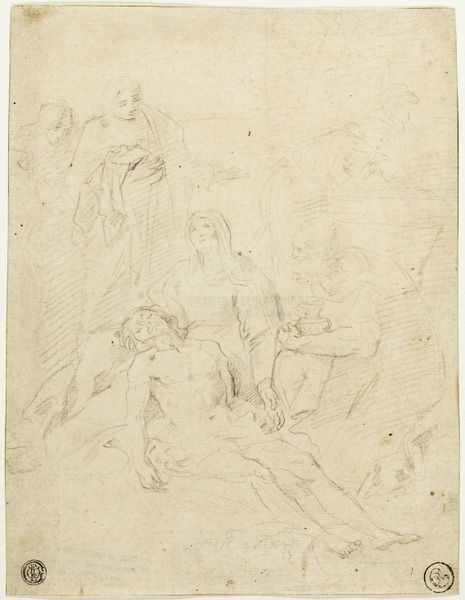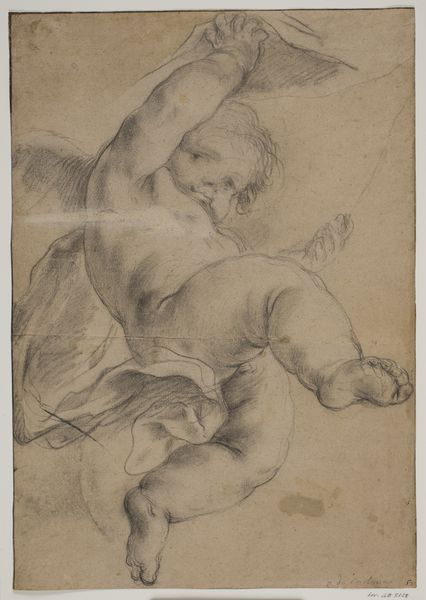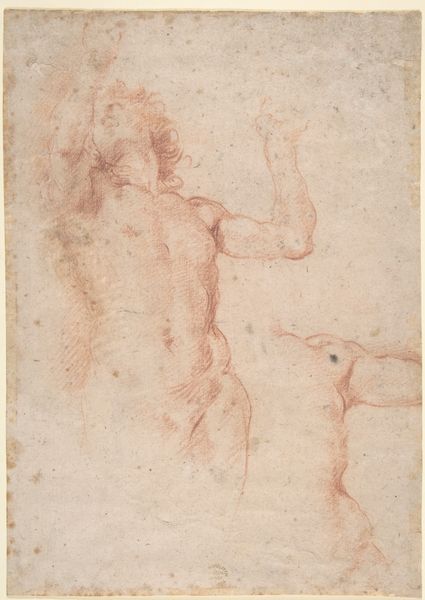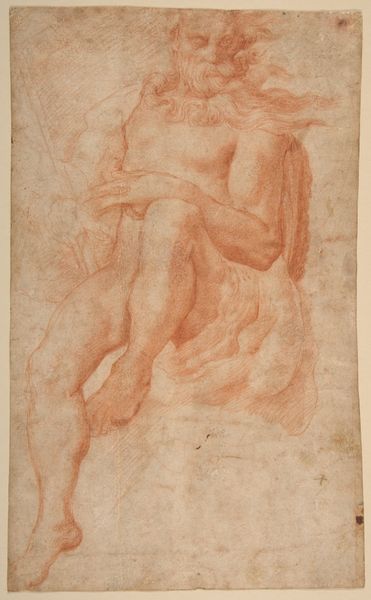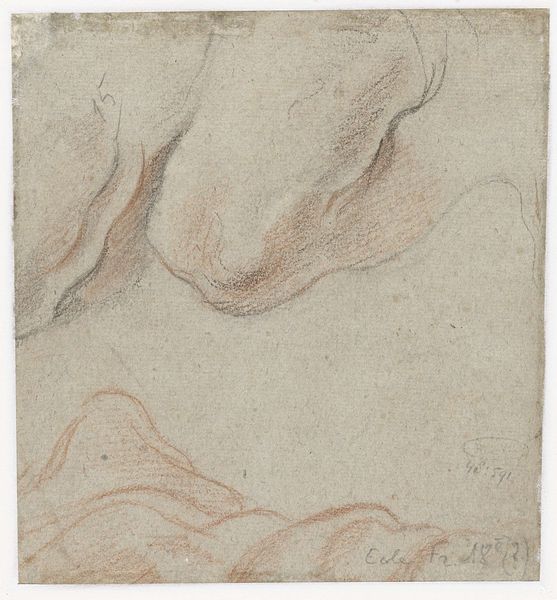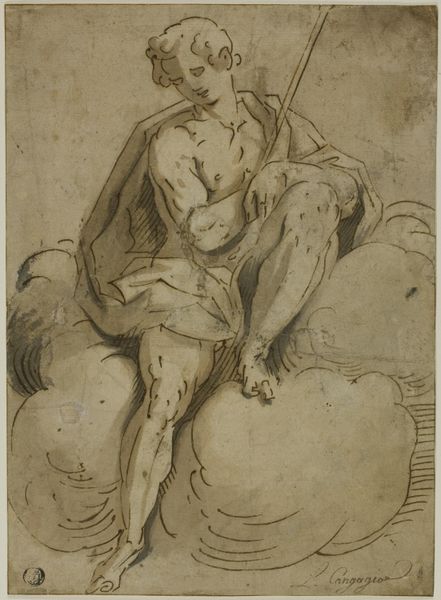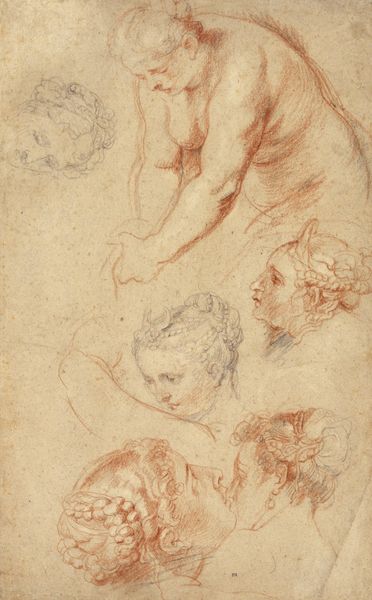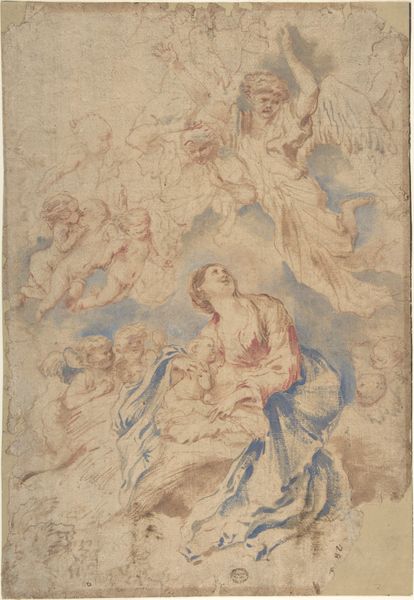
drawing, tempera
#
drawing
#
tempera
#
figuration
#
11_renaissance
#
oil painting
#
italian-renaissance
Dimensions: overall: 41.3 x 27.6 cm (16 1/4 x 10 7/8 in.)
Copyright: National Gallery of Art: CC0 1.0
Curator: This is a study by Federico Barocci from the 1590s, preparatory drawings, actually, for a servant in his painting of "The Last Supper." It's executed in tempera. Editor: There’s something so vulnerable about isolating these limbs, a leg here, an arm and hand there, floating against this somber, gray-blue paper. They feel a bit lost. Curator: Well, think of it from Barocci’s perspective. He's meticulously planning out this grand scene, focusing intensely on each figure. It's not just about the final image but the painstaking process of bringing it to life through material means. Editor: The choice of tempera interests me. Tempera demands precision. I imagine the servants who would grind those pigments. Were they thinking, feeling anything, when their labor went into a masterpiece that wouldn't bear their names? Curator: It adds a depth of tone I always find alluring about his drawings, almost as if the color is breathed onto the page. Perhaps a way to humanize each character of the painting from the beginning. It reminds me of how vital underlayers of feelings are. Editor: But let's talk about this ‘breathing.’ Consider the availability of such pigments. Who had access? What kind of exploitation sustained such access to beauty? That gray-blue of the paper, how readily could that have been come by at this time? Curator: It is sobering to consider, you’re right, and easy to romanticize Barocci's efforts here without thinking about labor, power, access... All these details are a potent reminder. It's art entangled in real-world dynamics. Editor: Right! A vital balance—between reverence for artistic vision and accountability for the economic realities underpinning such acts of creation. Thanks for the dialogue. Curator: To our hearing more from that silence.
Comments
No comments
Be the first to comment and join the conversation on the ultimate creative platform.
